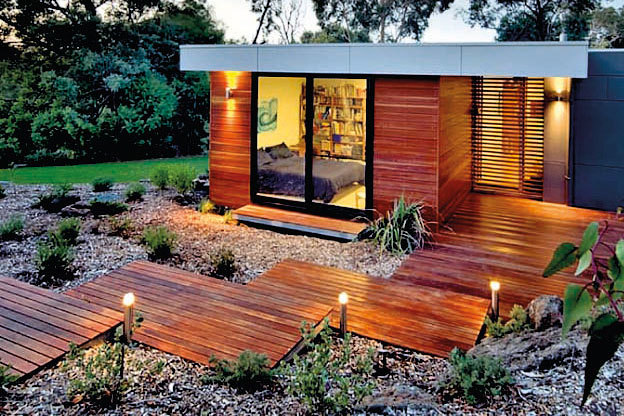
The idea of a pre-fab home has for decades been looked upon as déclassé for being cheap, too simple and lacking in style.
Now, efficient yet stylish describe the current wave of pre-fab homes hitting the market with increasingly enthusiastic kudos from architects, realtors and homeowners. The low-impact construction of pre-fab homes is also seen as better for the environment and in helping mitigate the effects of urban sprawl.
A pre-fab home starts out as sections that have been built in a climate-controlled area, usually a factory. The finished sections are transported to the building site, sometimes by helicopter for remote areas, and then assembled with simple tools or by cranes depending on the structure. Modular homes are not mobile homes as they cannot be moved after they have been placed and set on their foundations.
According to a report by Market Research Future, the Asia-Pacific region is set to overtake the US as the world’s largest pre-fabricated building market, with a projected growth rate of almost 6% a year between now and 2023. Mega-cities such as Jakarta will benefit the most from pre-fabs given its high rates of population growth and urbanization.

In Jakarta, some design firms are considering using pre-fab ‘plug in’ homes which are constructed without nails, tools or skilled labour and are slotted between old, closely-packed structures to overcome challenges specific to the city’s many crowded kampung areas. After being produced in a factory, the light prefabricated panels can be easily transported to the site through Jakarta’s often narrow lanes.
Anyone who has ever built a home or even undergone a renovation knows that the process is nearly always unpredictable, with mounting costs, the weather and human errors causing the most problems. Pre-fab housing offers a measure of control and certainty for your investment. While production varies by company, most of these dwellings are assembled in a factory and then installed on-site in a matter of days or weeks.
If you are designing your own home, it’s important to ask specific questions, as each manufacturer operates under a different set of guidelines. Many pre-fab home builders offer personalized features that include ceramic floors, solid-surface countertops, various cabinet styles and wood species, exterior finishes, plumbing fixtures, etc.
The more complex the design and specs, the more your home will cost. Electrical, plumbing and ductwork are often not factored into the initial pricing, so your final cost may be 20 percent more than the builder’s quote. You might also need to install a septic system, natural gas or a basement; these, too, will add to your bottom line.
When considering a pre-fab home, it is important to shop around, as not all companies that make factory-built homes are alike. There can be significant differences in quality, price and service. As with purchasing or building any home, it is crucial to do your research.
This article is originally from paper. Read NOW!Jakarta Magazine March 2020 issue “Property, Architecture & Design". Available at selected bookstores or SUBSCRIBE here.







